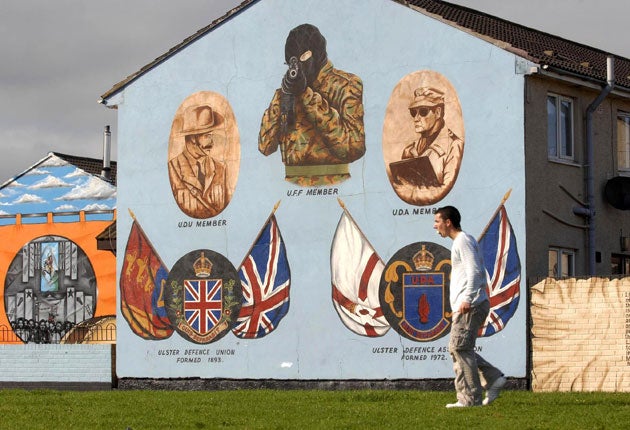Splashed beneath gables and daubed across walls, Belfast's sectarian murals are an impassioned pictorial history of conflict in Northern Ireland.
But many of the pictures are crumbling, and some locals, keen to reinvent their public image, are painting over them. While new images constantly spring up, many are lost forever.
Now, experts in Ireland say there are "significantly fewer" sectarian murals than at any time in the last 50 years.
Their concerns are echoed by one of the world's leading art experts, Martin Kemp, Emeritus Professor of the History of Art at Oxford University, who has questioned the murals' destruction. "My instinct as a historian is that these are some of the most important public images of our time," he says. "People should see what they can do to preserve them. Someone should look seriously at them with a view to which ones should be kept and how."
Professor Kemp writes about sectarian murals in his forthcoming book, Christ to Coke: How Image Becomes Icon, out in October, which explores the dissemination of famous imagery through popular culture. He highlights a mural unveiled in 1998 on western Belfast's Shiels Street, featuring an image of Che Guevara. The mural, meant to express Republicans' solidarity with the Cuban revolution, is flaking, and is split by a metal fence.
According to Professor Bill Rolston, of the University of Ulster, who is arguably the world's leading expert on Belfast's sectarian murals, there are now fewer of these works than at any time in the last 50 years.
"The problem is they are not seen as art, they are seen as political," he said. "They look like art but are not in the eyes of the people who paint them, so there is no pressure to preserve them."
He said that once the murals had served their purpose, they were often left to fade.
Indeed, the Arts Council of Northern Ireland (ACNI) now worked with local communities and artists to paint over murals. "There's been a lot of research into the iconography which has been left in Northern Ireland and various agencies have looked at positive ways we can address that legacy," said Noirin McKinney, ACNI's director of arts development. "Some of them have come down, while some have been replaced with sculptures or landscaping. It's really up to the community".
The agency refused to identify how many had been destroyed.
Belfast-based artist Lesley Cherry, who works with ACNI, maintained that any artwork to be painted over would be well documented beforehand. "We usually incorporate a plaque showing what was removed, before the new artworks is installed," she said.
Earlier this year, large murals appeared on gable walls in Belfast depicting masked members of the Ulster Volunteer Force in black turtlenecks holding automatic weapons. This presaged the street riots in Belfast in June and a level of sectarian violence that hadn't been witnessed in the city for several years.
Kemp acknowledged it was probably still too early to discuss aesthetic matters. "But to some extent it's a matter of time," he added.
"Once something survives to become an antique it achieves a higher status. Street art can be analysed like other historic art but tends not to be. It is really difficult to conserve them and often impossible."

Join our commenting forum
Join thought-provoking conversations, follow other Independent readers and see their replies
Comments